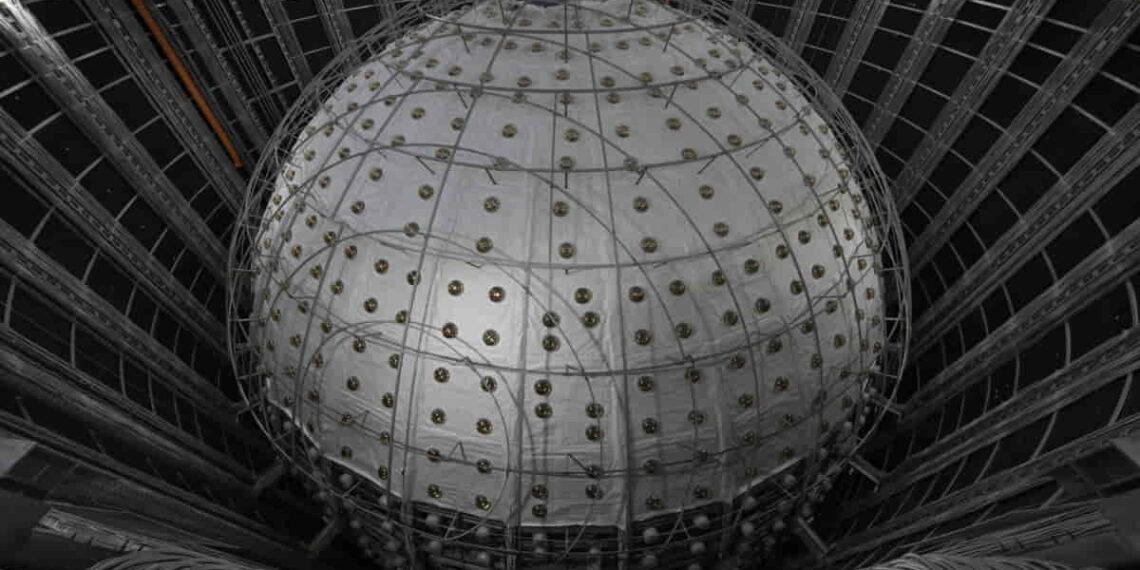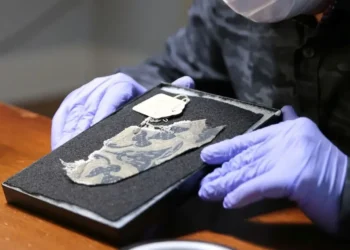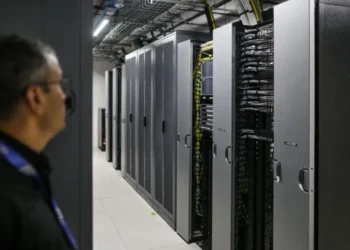China’s Neutrino Detector: Unlocking the Secrets of the Universe’s Most Elusive Particles
Deep beneath a granite hill in southern China, a groundbreaking project is nearing completion. The Jiangmen Underground Neutrino Observatory (JUNO) is set to begin its mission to uncover the mysteries of neutrinos, tiny yet powerful cosmic particles that have baffled scientists for decades.
As one of three global neutrino detectors, JUNO will offer the most detailed insights into these “ghost particles” yet. While its counterparts in the United States and Japan are still under construction, JUNO is set to begin operations next year, pushing the boundaries of our understanding of the universe.
What Are Neutrinos?
Neutrinos are among the most elusive particles known to science. They were created in the Big Bang and have been streaming through space—and through us—ever since. Trillions of these particles pass through our bodies every second, emitted by the sun, stars, and even nuclear power plants.
Although neutrinos have been known to science for nearly a century, their true nature remains one of the greatest mysteries in particle physics. “It’s the least understood particle in our world,” says Cao Jun, a project manager for the JUNO detector. This is why studying them is so crucial.
Why Are Neutrinos So Hard to Detect?
Neutrinos interact so weakly with matter that they pass through most substances without leaving a trace. To detect them, scientists rely on what happens when neutrinos collide with other particles, causing flashes of light or charged particles. However, these interactions are rare, so researchers need large-scale detectors to increase the likelihood of capturing them.
As Andre de Gouvea, a theoretical physicist at Northwestern University, explains, “The solution for how we measure these neutrinos is to build very, very big detectors.”
A Giant Detector to Catch Tiny Particles
The JUNO detector, located in Kaiping, China, is one of the largest and most sophisticated neutrino detectors ever constructed. At a cost of $300 million, the project took over nine years to complete. Situated 2,297 feet (700 meters) underground, the location shields the detector from cosmic rays and other interference that could disrupt its delicate measurements.
Workers recently reached a key milestone, beginning the final phase of construction. The spherical detector will be filled with a special liquid that emits light when neutrinos pass through it. This will allow scientists to track and study the particles in unprecedented detail. The entire setup will be submerged in purified water to further reduce noise from background radiation.
Studying Antineutrinos to Unlock New Insights
JUNO will focus on antineutrinos, the opposite of neutrinos, which are produced by two nuclear power plants located over 31 miles (50 kilometers) away. When antineutrinos interact with particles inside the detector, they generate flashes of light, which can then be studied to learn more about their behavior. This will help scientists understand one of the biggest questions in neutrino research: how do neutrinos change between three distinct “flavors” as they travel through space?
Kate Scholberg, a physicist at Duke University, calls the project “a daring thing to even go after” because of the complexity of detecting these subtle shifts.
Looking Ahead: The Quest to Understand the Universe
JUNO is expected to begin operations in the second half of 2024. After that, it will take time to collect and analyze the data, but the potential breakthroughs are worth the wait. Scientists hope the results from JUNO will help answer fundamental questions about the universe’s origins and evolution.
Neutrinos hold the key to understanding the universe’s earliest moments. They are believed to have played a role in the imbalance between matter and antimatter that shaped the cosmos as we know it. As Wang Yifang, chief scientist of the JUNO project, puts it, “In the end, we have a better understanding of the nature of physics.”
In addition to JUNO, two other neutrino detectors—Japan’s Hyper-Kamiokande and the Deep Underground Neutrino Experiment (DUNE) in the United States—are under construction. These projects, scheduled to begin operations around 2027 and 2031, will complement JUNO’s findings and offer new perspectives on neutrino behavior.
By studying these mysterious particles, scientists hope to uncover secrets not only about how the universe formed, but also about the fundamental forces that govern everything from the smallest particles to the largest cosmic structures. Neutrinos may be tiny, but their impact on our understanding of the universe could be immense.
This article was rewritten by JournosNews.com based on verified reporting from trusted sources. The content has been independently reviewed, fact-checked, and edited for accuracy, neutrality, tone, and global readability in accordance with Google News and AdSense standards.
All opinions, quotes, or statements from contributors, experts, or sourced organizations do not necessarily reflect the views of JournosNews.com. JournosNews.com maintains full editorial independence from any external funders, sponsors, or organizations.
Stay informed with JournosNews.com — your trusted source for verified global reporting and in-depth analysis. Follow us on Google News, BlueSky, and X for real-time updates.













